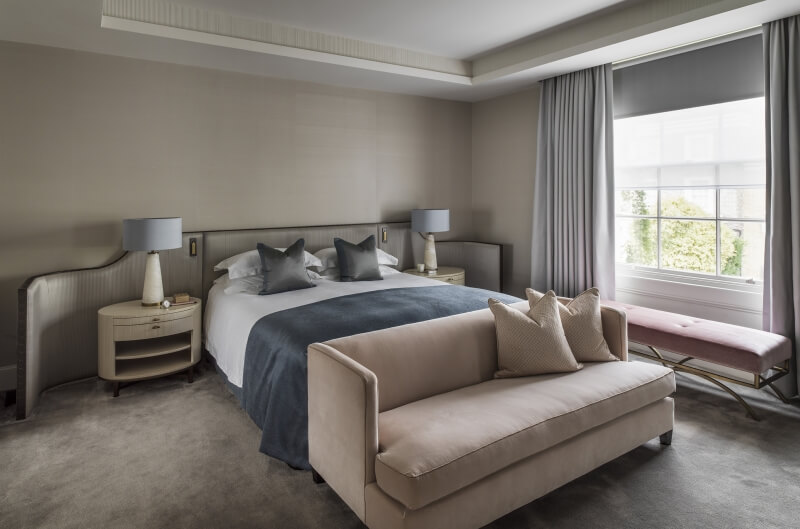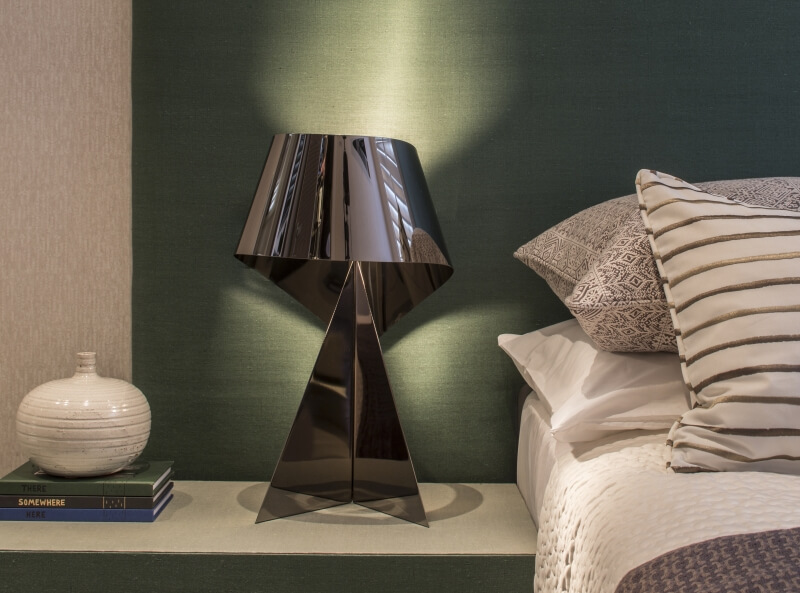Sleep plays an essential role in our physical health and mental wellbeing, and not having enough of it can increase the chances of developing life-limiting conditions later in life. Improving sleep is actually the biggest health ambition for a quarter of UK adults (26%), but half don’t take any measures to improve sleep at all.
Focusing on your bedroom space is a step in the right direction towards a healthy night’s sleep. Often overlooked, home lighting is one of the most effective design elements to consider. So, as the nights begin to draw in, now is the ideal time to reconnect with your sleep zone by elevating levels of ambience to transform it into a cosy, tranquil retreat.


How does bedroom lighting improve sleep health?
For those of you contemplating how to make your slumber space the ultimate haven of calm, you would be forgiven for instantly turning your attention to clearing the clutter, re-painting or investing in a quality mattress. Considering your bedroom lighting is crucial because:
- Exposure to blue light suppresses the production of the sleep hormone melatonin
- Red light has a low colour temperature which has a soothing effect on the body
- Correct bedroom lighting helps you carry out everyday tasks that are often taken for granted; from energizing duties such as getting ready for the day ahead, to relaxing with a good book to wind-down at the end of a busy day.
What is light layering?
Designing a bedroom that allows one to completely recharge, should always consider a lighting system that seamlessly integrates both ambient, accent and task lighting. This is known as ‘light layering’ – a crucial element in effective bedroom design, as carefully chosen layered lighting schemes can really set the tone and mood of a room. Incorporating multiple sources of light will provide a smooth transition from a tranquil space made for a sound night’s sleep to a refreshing space that motivates and lifts your spirits each morning. Combined with ‘smart’ lighting controls, ambient layers of light can be fine-tuned from day to night or according to mood with ease.
Ambient lighting in the bedroom
Making up the “foundation” amount of light in a room, ambient lighting provides glare-free, subtle illumination that allows you to set the atmosphere appropriate to mood. Ambient lighting sources typically include flush mounted ceiling fixtures, sconces, table lamps and floor lamps, as well as layers of natural light. Those that want greater flexibility and control over ambient lighting levels opt for softening dimmer switches, effectively adjusting ambient light levels according to their mood.
For our Fitzrovia penthouse apartment project, we teamed practical LED downlights with perimeter LED lighting strips hidden behind the edge of the bulkhead to create a gentle, ambient allure in the master bedroom.
Accent lighting in the bedroom
Accent lighting (or decorative lighting) is used to draw attention to specific elements within a design scheme, such as a piece of art or to highlight the character and depth of unique architectural features. Dramatic and interesting accent lighting effects can be achieved with picture lights, recessed spotlights, or uplighters. For maximum impact, accent lighting should be three times brighter than the surrounding ambient lighting.
To smoothly highlight the exquisite architectural details of our Bromptons duplex apartment project, accent lighting was introduced via curved wall lights placed either side of the fireplace.
Task lighting in the bedroom
Nowadays, many bedrooms have become multi-use spaces, with sleeping spaces doubling up as workspaces as well as dressing rooms. Directional task lighting practically provides illumination for specific functions or to brighten poorly lit areas, such as desk lamps with cooler colour temperatures to help stay focused, and wall sconces positioned next to mirrors to get dressed without casting harsh shadows.
Striking table lights chosen for our Broad Walk modern new-build project provide the desired level of focus to get comfy with a good book without eye strain, whilst making the most of the available space at the stylish desk area.
How to effectively layer light in the bedroom
The most visually and functionally balanced bedrooms utilise effective light layering techniques with four purposes in mind;
To highlight architectural features
This brass ‘antique finish’ Klute Lamp Base from India Jane, complete with tapered drum lampshade from the Elefant Collection from J Robert Scott, embodies the true spirit of our Richmond residential project; a bold symphony of old and new.
The epitome of a relaxed, functional family home with an interior scheme to complement the period architecture, the fusion of ambient, accent and task lighting, alongside handpicked layers of texture, beautifully highlight the timeless architectural features of the master bedroom of our mock-Tudor project in Richmond.
To provide dramatic decorative effects
Minimalist and curvaceous, the addition of this distinctive ‘Gunmetal’ ribbon table lamp from Habitat provides a luxuriously dramatic touch in contrast to the neutral colour palette and layers of rich texture.
See more of our Eaton Mews North project here.
To create the illusion of space
This cosy guest bedroom from our Broad Walk project combines a large mirror with bespoke layers of light to amplify the illusion of more space.
To define zones in open plan areas
The accent lighting introduced via these curved wall lights also doubles up as useful task lighting, whilst seamlessly defining the cosy bedroom reading corner of our Bromptons project.
Create ambience in your sleep zone with Roselind Wilson Design
At a point in history where looking after our physical and mental health has never been more important, it’s time to reconnect and transform your bedroom into a space that soothes as well as excites. From separate lighting circuitry to advice on high-CRI lighting, if you’re dreaming of a luxurious and relaxing bedroom space, contact us today.
Related topics:
A room-by-room guide to lighting your home
